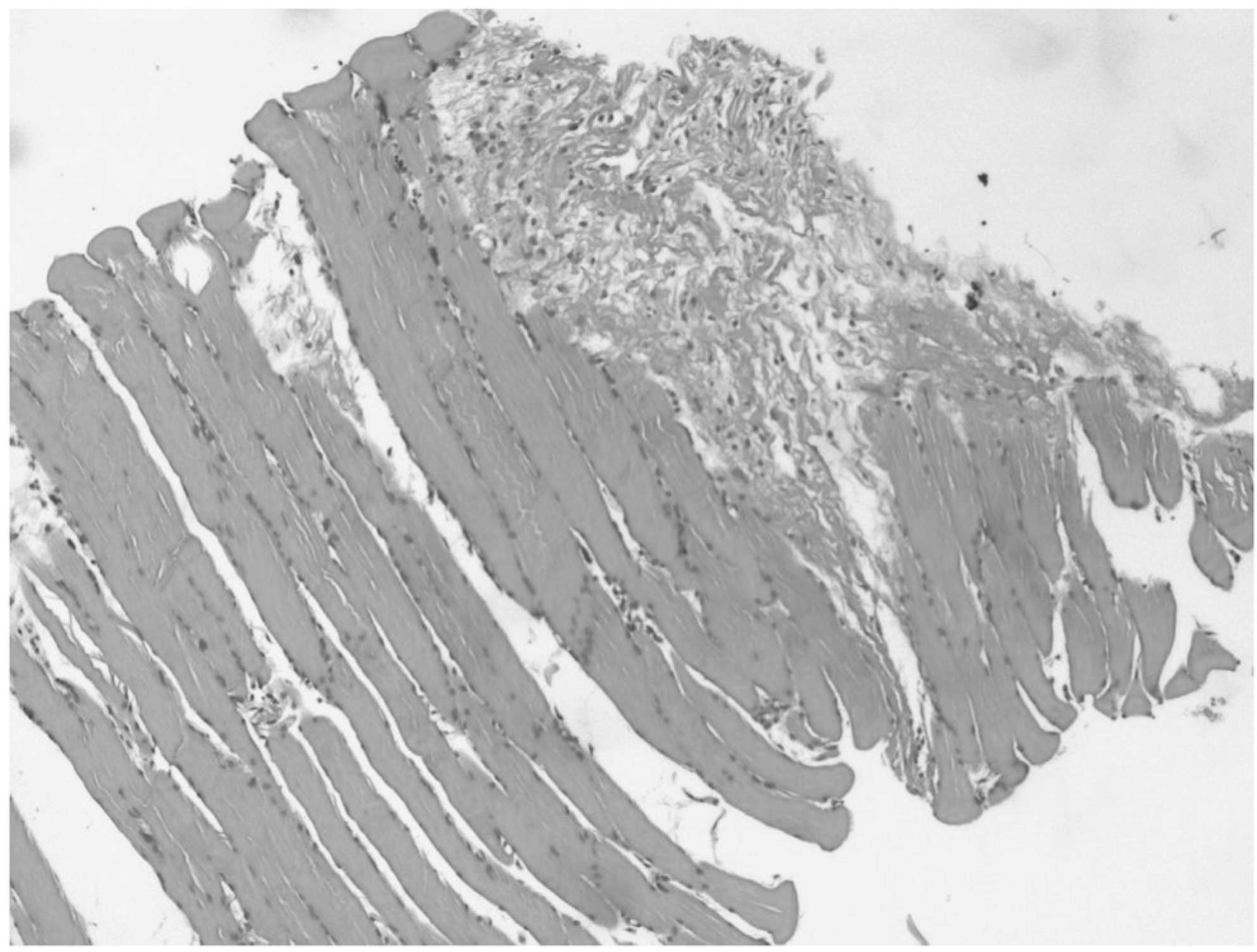J Korean Diabetes.
2016 Mar;17(1):67-72. 10.4093/jkd.2016.17.1.67.
A Case of Bilateral Diffuse Diabetic Muscle Infarction of the Thighs in a Patient with Good Glucose Control
- Affiliations
-
- 1Department of Internal Medicine, The Catholic University of Korea, Yeouido St. Mary's Hospital Seoul, Korea. najinsc@gmail.com
- KMID: 2161134
- DOI: http://doi.org/10.4093/jkd.2016.17.1.67
Abstract
- Diabetic muscle infarction (DMI) is a rare condition that usually occurs in diabetic patients who have longstanding microvascular complication. The typical presentation is a painful swelling with abrupt onset in the lower limbs, particularly involving hyper-intense signals in T2-weighted magnetic resonance imaging (MRI) images. The treatment consists of bed rest, analgesics, and physical therapy. The authors encountered a case of DMI with bilateral tender swelling on the anteromedial aspect of the thighs. DMI is less likely to develop in patients with good glycemic control. Recently, however, a few cases demonstrated that DMI can also develop in patients with good glucose control. However, diffuse and extensive infarction of muscle, such as in our case, is rare. It is important to consider differential diagnoses in order to avoid misdiagnosis and non-essential treatment such as overuse of antibiotics or steroid treatment. In this case, we diagnosed the patient using MRI, muscle biopsy, and electromyography and successful treatment involved bed rest and analgesics. We herein report a case of 76-year-old man with very extensive and diffuse DMI in spite of well-controlled type 2 diabetes.
MeSH Terms
Figure
Cited by 1 articles
-
Diabetic Muscle Infarction in a Young Patient with Prader–Willi Syndrome and Type 2 Diabetes Mellitus
Eun-Jeong Kwon, Eun-Ji Lee, Hak Chul Jang, Eun Ha Kang, Yun Jong Lee, You-Jung Ha
J Korean Diabetes. 2020;21(4):227-234. doi: 10.4093/jkd.2020.21.4.227.
Reference
-
References
1. Rocca PV, Alloway JA, Nashel DJ. Diabetic muscular infarction. Semin Arthritis Rheum. 1993; 22:280–7.
Article2. Umpierrez GE, Stiles RG, Kleinbart J, Krendel DA, Watts NB. Diabetic muscle infarction. Am J Med. 1996; 101:245–50.
Article3. Banker BQ, Chester CS. Infarction of thigh muscle in the diabetic patient. Neurology. 1973; 23:667–77.
Article4. Trujillo Santos AJ, Alcalá Pedrajas JN, Moreno García MM, García de Lucas MD, García Sánchez JE. A 70-year-old woman with right calf pain and inflammation. Rev Clin Esp. 2001; 201:153–4.5. Parmar MS. Diabetic muscle infarction. BMJ. 2009; 338:b2271.
Article6. Kapur S, Brunet JA, McKendry RJ. Diabetic muscle infarction: case report and review. J Rheumatol. 2004; 31:190–4.7. Trujillo-Santos AJ. Diabetic muscle infarction: an underdiagnosed complication of long-standing diabetes. Diabetes Care. 2003; 26:211–5.8. Bjornskov EK, Carry MR, Katz FH, Lefkowitz J, Ringel SP. Diabetic muscle infarction: a new perspective on pathogenesis and management. Neuromuscul Disord. 1995; 5:39–45.
Article9. Kapur S, McKendry RJ. Treatment and outcomes of diabetic muscle infarction. J Clin Rheumatol. 2005; 11:8–12.
Article10. Yu HM, Jin HY, Park TS. Case of recurrent diabetic muscle infarction related to strict blood glucose control. Korean J Med. 2013; 84:737–41.
Article11. Hinton A, Heinrich SD, Craver R. Idiopathic diabetic muscular infarction: the role of ultrasound, CT, MRI, and biopsy. Orthopedics. 1993; 16:623–5.
Article12. Morcuende JA, Dobbs MB, Crawford H, Buckwalter JA. Diabetic muscle infarction. Iowa Orthop J. 2000; 20:65–74.13. Wang SI, Park JH, Lee JH. Acute compartment syndrome in association with spontaneous muscle infarction. J Korean Orthop Assoc. 2012; 47:75–8.
Article14. Hwang JH, Jeong ST, Ra YJ, Jung JY. Diabetic muscle infarction in diabetes; three cases report. J Korean Acad Rehabil Med. 2003; 27:803–7.
- Full Text Links
- Actions
-
Cited
- CITED
-
- Close
- Share
- Similar articles
-
- Case of Recurrent Diabetic Muscle Infarction Related to Strict Blood Glucose Control
- Diabetic Muscle Infarction in a Chronic Stroke Patient: A Case Report
- A Case of Diabetic Muscle Infarction Affecting Upper and Lower Limbs
- A case of anterior tibial compartment syndrome induced by bilateral diabetic muscular infarction in hypothyroid state
- Acute Compartment Syndrome in Association with Spontaneous Muscle Infarction



